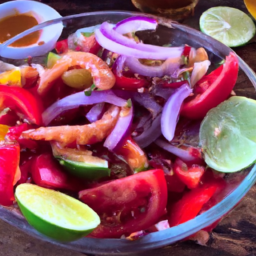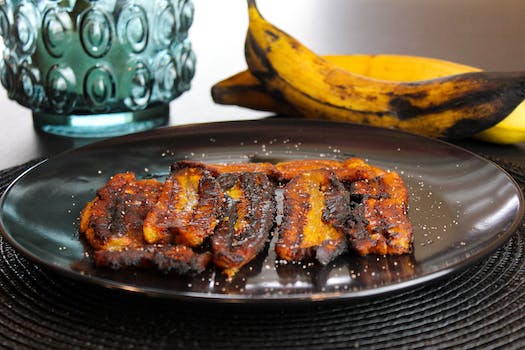Exploring the Regional Cuisines of the Caribbean: A Guide to the Unique Flavors of Each Island
The Caribbean is a region renowned for its vibrant culture and unique cuisine. From the spicy flavors of Jamaica to the tropical tastes of the Dominican Republic, each island has its own distinct culinary identity. This guide will explore the regional cuisines of the Caribbean, highlighting the unique flavors of each island.
Jamaica is known for its spicy flavors, with dishes such as jerk chicken and curried goat being popular staples. The island is also home to a variety of tropical fruits, such as mangoes, papayas, and coconuts, which are often used in traditional dishes. Jamaica’s national dish is ackee and saltfish, a savory combination of ackee fruit, cod, and spices.
The Dominican Republic is known for its flavorful dishes, such as sancocho, a hearty stew made with a variety of meats and vegetables. The island is also home to a variety of tropical fruits, such as plantains, bananas, and guavas, which are often used in traditional dishes. The national dish of the Dominican Republic is la bandera, a combination of white rice, red beans, and stewed meat.
The Bahamas is known for its seafood-based dishes, such as conch chowder and cracked conch. The island is also home to a variety of tropical fruits, such as pineapples, coconuts, and guavas, which are often used in traditional dishes. The national dish of the Bahamas is souse, a savory combination of pork, vegetables, and spices.
Puerto Rico is known for its flavorful dishes, such as mofongo, a mashed plantain dish served with a variety of meats and sauces. The island is also home to a variety of tropical fruits, such as mangoes, papayas, and coconuts, which are often used in traditional dishes. The national dish of Puerto Rico is arroz con gandules, a savory combination of rice, pigeon peas, and pork.
The Virgin Islands are known for their seafood-based dishes, such as callaloo soup and fish stew. The island is also home to a variety of tropical fruits, such as bananas, coconuts, and guavas, which are often used in traditional dishes. The national dish of the Virgin Islands is fungi, a savory combination of cornmeal, okra, and spices.
The Caribbean is a region full of unique flavors and culinary traditions. From the spicy dishes of Jamaica to the seafood-based dishes of the Virgin Islands, each island has its own distinct culinary identity. This guide has explored the regional cuisines of the Caribbean, highlighting the unique flavors of each island.
The History of Caribbean Cuisine: How the Region’s Food Culture Has Evolved Over Time

Caribbean cuisine is a unique and vibrant blend of flavors, ingredients, and cooking techniques that have evolved over centuries. The region’s food culture has been shaped by its diverse history, geography, and climate, as well as the influence of its many different cultures.
The Caribbean’s culinary history can be traced back to the indigenous peoples who first inhabited the region. These early inhabitants relied on the bounty of the land and sea for sustenance, and their diets were largely based on fruits, vegetables, and seafood. They also developed a variety of cooking techniques, such as smoking, roasting, and grilling, which are still used today.
The arrival of Europeans in the Caribbean in the 16th century brought with it a new wave of culinary influences. The Spanish, French, and British all brought their own culinary traditions to the region, introducing new ingredients and cooking techniques. These included the use of spices such as cumin, oregano, and paprika, as well as the introduction of new fruits and vegetables, such as tomatoes, peppers, and potatoes.
The African slave trade also had a major impact on Caribbean cuisine. African slaves brought with them their own culinary traditions, which blended with the existing European and indigenous influences to create a unique and flavorful cuisine. Dishes such as jerk chicken, curried goat, and plantains are all examples of this fusion of cultures.
In the 19th and 20th centuries, Caribbean cuisine continued to evolve as new ingredients and cooking techniques were introduced. The introduction of new ingredients such as coconut, mango, and pineapple, as well as the use of spices such as allspice, nutmeg, and cinnamon, further enriched the region’s culinary culture.
Today, Caribbean cuisine is a vibrant and diverse mix of flavors and ingredients that reflect the region’s rich history and culture. From the spicy jerk chicken of Jamaica to the curried goat of Trinidad and Tobago, Caribbean cuisine is a delicious and unique blend of flavors that has evolved over centuries.
The Benefits of Eating Caribbean Food: How the Region’s Cuisine Can Improve Your Health and Well-Being
Caribbean cuisine is renowned for its vibrant flavors and unique ingredients, and it can be a great way to improve your health and well-being. The region’s cuisine is rich in vitamins, minerals, and other essential nutrients, making it an excellent choice for those looking to improve their overall health. Here are some of the benefits of eating Caribbean food.
First, Caribbean food is packed with essential vitamins and minerals. Many of the region’s dishes are made with fresh fruits and vegetables, which are rich in vitamins A, C, and E, as well as minerals such as calcium, iron, and magnesium. Eating these foods can help to boost your immune system, improve your skin health, and even reduce your risk of certain diseases.
Second, Caribbean food is high in fiber. Many of the region’s dishes are made with whole grains, legumes, and other high-fiber ingredients. Eating these foods can help to keep your digestive system healthy and can even help to reduce your risk of certain types of cancer.
Third, Caribbean food is low in fat and cholesterol. Many of the region’s dishes are made with lean proteins, such as fish and poultry, and are cooked in healthy oils, such as olive oil. Eating these foods can help to reduce your risk of heart disease and other health problems associated with high levels of fat and cholesterol.
Finally, Caribbean food is full of flavor. The region’s cuisine is known for its unique spices and herbs, which can add a delicious kick to any dish. Eating these flavorful dishes can help to make meals more enjoyable and can even help to reduce stress and improve your mood.
Eating Caribbean food can be a great way to improve your health and well-being. The region’s cuisine is packed with essential vitamins and minerals, high in fiber, low in fat and cholesterol, and full of flavor. So, if you’re looking to improve your overall health, consider adding some Caribbean dishes to your diet.

